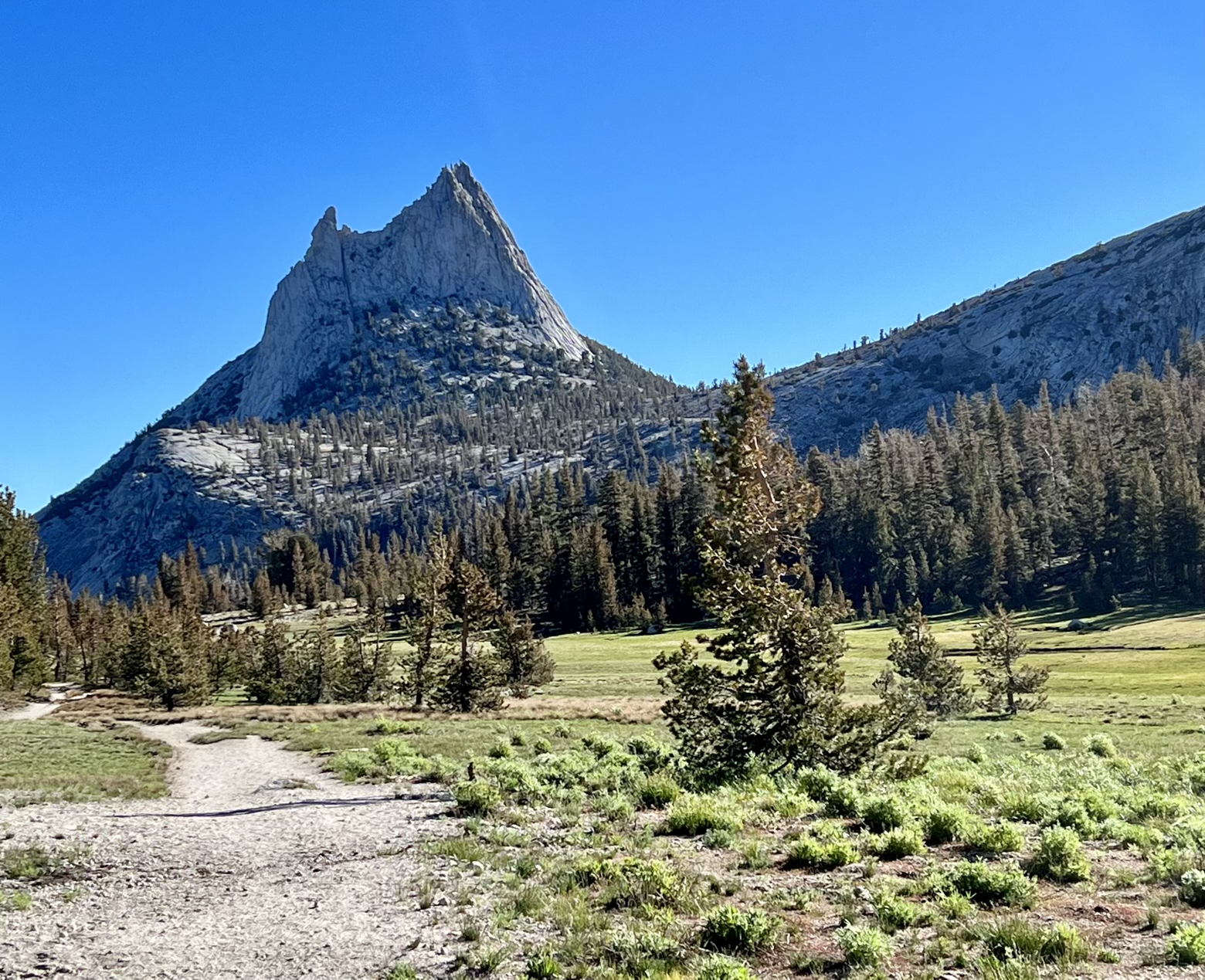Date: 7/6/22
Miles: 18.0
Total Miles: 32.4
The Sierra must be seen to be fully believed. And Yosemite is the beating heart of that Sierra. Of the more than 4 million annual visitors to Yosemite National Park, the vast majority never leave Yosemite Valley, however. With highlights known the world over—El Capitan, Half Dome, Yosemite Falls, Glacier Point—you can hardly blame them.
Awash with morning light, our march past the shoulder of Cathedral Peak was just one of many reminders of the side of Yosemite that most visitors don’t get to see. The side that also reminds you that a hike of the John Muir Trail is as much a celebration of raw natural beauty as it is a walk from one point to another.

Though not the first national park, Yosemite is often thought of as being so, at least in spirit anyway. It’s also a park that almost never was.
Despite becoming a national park in 1890, Yosemite Valley itself remained under the control of the state of California. Under threat of falling prey to various commercial interests—sheep grazing and sequoia logging, among others—people like Galen Clark, John Muir, and the Sierra Club, lobbied to protect Yosemite at the federal level. But it wasn’t until 1903, during a fateful camping trip near Glacier Point, when John Muir convinced then-president Teddy Roosevelt to do just that.
What exactly moved Roosevelt to sign legislation taking Yosemite Valley from California state control and to protect it, in perpetuity? In a sense, Muir simply encouraged him to do what every visitor to Yosemite instinctively does: to look around and see for himself what was worth protecting. Truly unique among the early parks, Yosemite was the first to be protected for nothing more than its intrinsic natural grandeur.

It really is that special a place. I imagine marmots, like the one we saw commuting across a bridge at a full gallop this morning, would certainly agree. Everywhere you go, you hear and see what feels like the real life embodiment of wilderness, perfected.
Water flows like liquid glass, the sound of it ranging from pleasant gurgle to a symphony of white noise reverberating against the walls of granite. Deer graze in meadows, while birdsongs fill the air along with an aromatic sweetness from the layers of dried pine needles that carpet the forest. Above, the sky is an unyielding blue, brightened and darkened only by the daily arc of the sun.

If you haven’t gotten the vibe that Yosemite and the rest of the Sierra is about as close to paradise as you’ll find, then I’m doing a poor job of selling this place. If you’ve never been, you owe it to yourself to right that wrong. There’s a reason why it lands on our list of potential hiking plans every single year—something I’m not sure is true of anywhere else.
It’s also why in the 4 times I’ve been to the bridge over the Lyell Fork in the above photo, I’ve done exactly the same thing. Take off my sandals, sit on the bank with my feet in the water, and do nothing but take in as much of it as my senses can bear. And that’s precisely what we found ourselves doing, before shouldering our packs to leave behind Tuolumne Meadows, on our way to see the other side of Yosemite.

Mile after mile slipped by while we strode along the edge of Lyell Canyon, its meadow and meandering creek seeming to stretch to the horizon. When the meadow finally came to an end at a wall of trees, we’d found our home for the night among a stand of lodgepole pine all too willing to support our hammocks.
Lying awake, I can still hear the churning flow of Lyell Fork and the birds who sing their own celebration of this place. Our celebration continues tomorrow, with a goodbye to Yosemite, and a hello to merely the first of all the high alpine passes that lie waiting.

Latitude/Longitude: 37.79056,-119.26221
